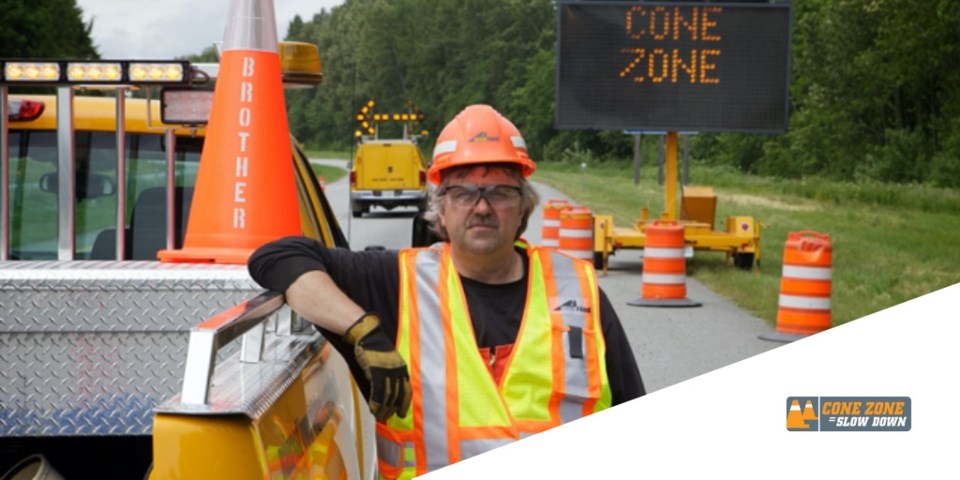How would you cope if vehicles drove within a few feet of your workstation?
It’s a daily peril for many Delta residents. They’re roadside workers – people who do their jobs while traffic flows around them. Every shift they face the risk of being injured or killed.
More vehicles on the road during the summer and around holiday weekends increases the risk. There are a number of significant improvement projects currently underway throughout the city including Highway 99 and 91.
“Working around traffic is dangerous,” says Trace Acres, spokesperson for the annual Cone Zone safety awareness campaign. “Cone Zones are there to protect and save lives.”
Tens of thousands of British Columbians work at the roadside in Cone Zones, which are most often associated with bright orange cones. (Reflectors and other signs can also be used.) Each zone has its own unique set of hazards associated with roads, traffic, vehicles, weather, and work activities.
“Driving too fast and not paying attention in a Cone Zone puts roadside workers at risk,” Acres continued. “Orange cones are often the only thing separating their workspace from your vehicle.”
WorkSafeBC statistics show two roadside workers in the province were killed last year and 31 were injured seriously enough to miss work after being hit by a vehicle. Over the last decade, 12 roadside workers lost their lives and 221 missed time from work due to injury.
“It’s more than road construction and maintenance crews, and traffic control persons,” noted Acres. “We’re also talking about landscapers, municipal workers, tow truck operators, utility workers, movers, and delivery van drivers. Also watch for flashing lights and slow down when you see emergency and enforcement personnel.
“Every roadside worker in Delta and around Greater Vancouver deserves to make it home to their family at the end of their shift without injury,”
The annual Cone Zone campaign aims to raise awareness about the safety risk, and reminds employers, workers, and drivers to each do their part to prevent deaths and injuries
Drivers approaching a Cone Zone need to:
- Slow down and avoid distractions like a phone. A distraction of even a few seconds can have life-changing consequences
- Pay attention to temporary road signs, traffic cones, and directions given by a traffic control person
- Comply with BC’s Slow Down, Move Over law, which requires drivers to slow down and move over to the left lane when safe to do so for any vehicle flashing a red, blue, or amber light. This includes tow trucks, utility vehicles, garbage trucks, and emergency response vehicles
Typical penalties for unsafe driving in a Cone Zone include a $368 fine for using a phone and at least $196 for speeding.
“When approaching, and also when passing through, a Cone Zone, it is essential that you be vigilant for roadside workers, temporary signage, and emergency or service vehicles,” said Sgt. Patrick Davies, BC Highway Patrol. “This is a workplace, and those working there deserve our respect and attention. In a Cone Zone, operating your vehicle, and doing so safely, should be your only focus. Remember, a moment’s inattention on your part can have tragic results for a roadside worker!”



